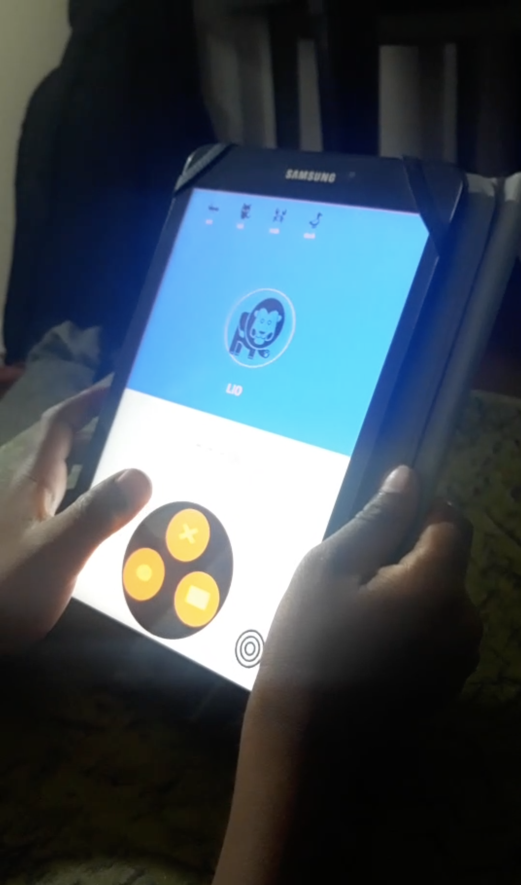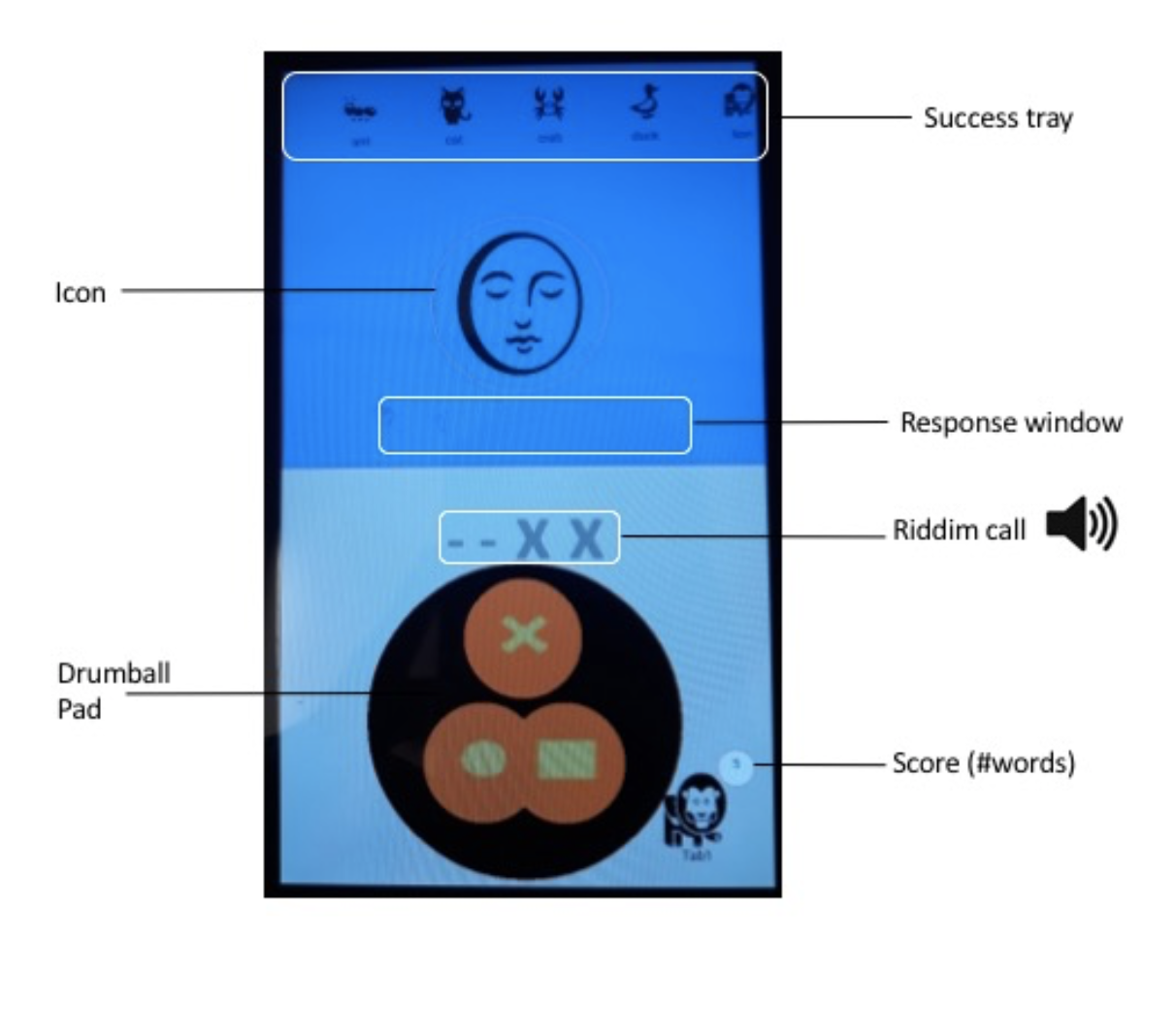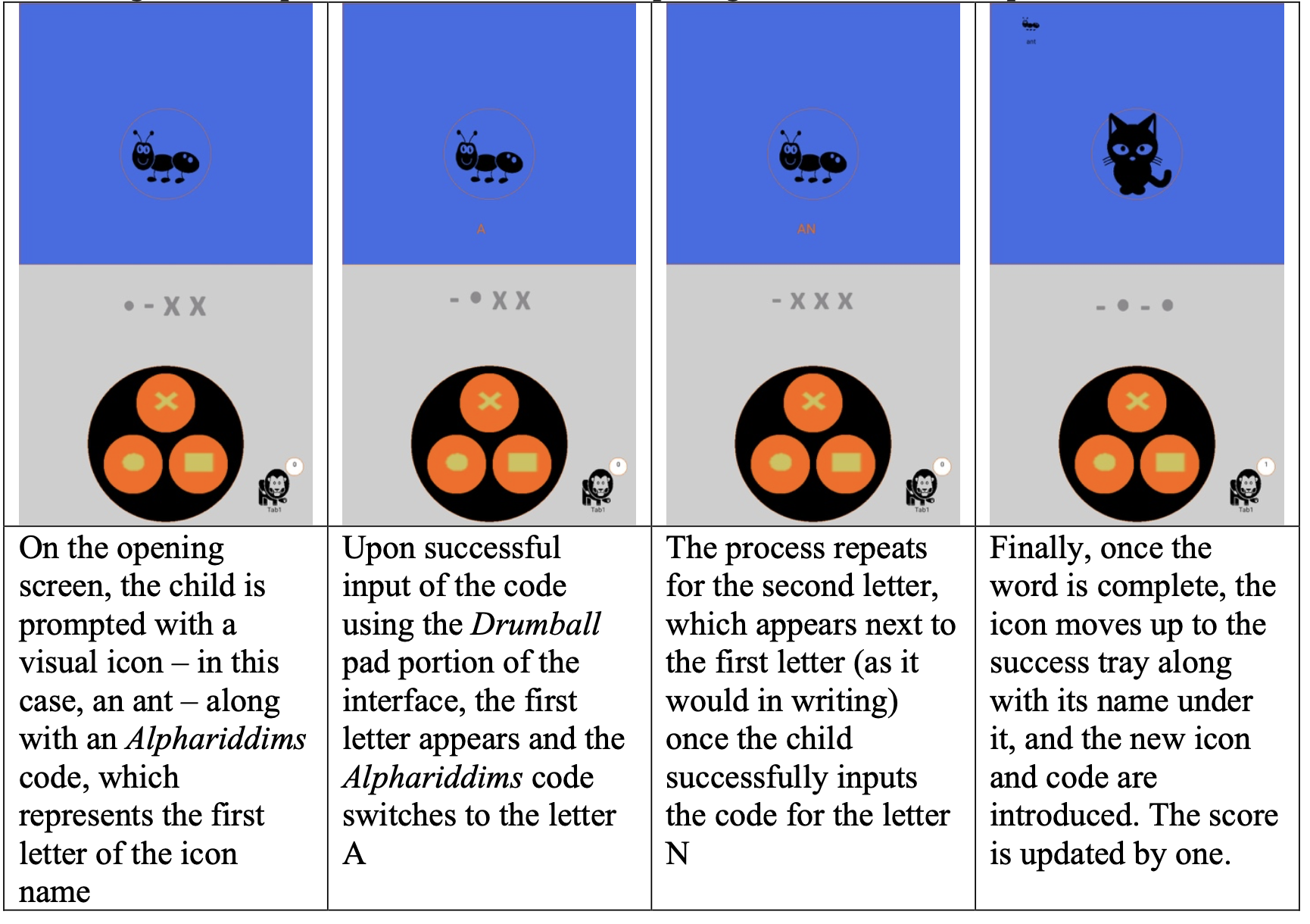In this rhythm game, you can access different levels of content using a digital talking drum to complete rhythm quests: challenges of varying degrees consisting of
producing elements from a corpus of letters, words and phrases, solely through rhythm. To win the game, you must play the correct rhythm sequence using the Alphariddim encoding to respond to the call pattern through various drum sound combinations.
These call rhythms are unique and relatively simple, and the player response must be performed in correct sequence to be accepted by the game.
Your goal is to complete as many call rhythm items as possible without missing a beat.
Ok Drummer, let's go!
In the Alphariddims game, rhythms are used to represent letters, words and phrases by means of a Morse code-like system of three signs (‘·’, ‘–‘ and ‘x’) - inspired by the three basic strikes of most talking drums, i.e., base, tone and slap.
In this way, you can explore the alphabet, spell words and more. In the beginning, each letter is produced from a rhythm of exactly 4 beats (see Alphariddim code table below). In the final level, each syllable in a phrase is mapped to a drum tone of low, mid or high pitch using the same visual symbol system of 3 signs.
 [Click here to hear a sample of each alphariddim code]
[Click here to hear a sample of each alphariddim code]
To play together with others, have one person operate the game while the others use a regular drum and/or their body as instrument, assigning a movement to each alphariddims symbol (e.g slap thighs for tone, clap hands for slap, stomp feet for base), and performing the sequence of movements as indicated by the call pattern.
GETTING STARTED
As the main area of interaction for the user, the
Drumball physical controller (or drumball pad screen interface) is modelled after the handplaying technique of the
djembe drum (pictured below).

The hardware interface (left) senses physical input/strikes and transforms it into a digital control signal. Or, in the context of a mobile device interface, you can select the current sign of the call rhythm by tapping the corresponding area/button on the graphical drumball pad (right).


When using a keyboard, the symbols are mapped to specific keys. In all cases, inputs are coupled with the playback of sound files—either a base, a tone or a slap sound - so that each sign is triggered by a different type of strike.
LEVEL A.1 - RHYTHM EXPLORER
In this level, you can freely explore/practice
global rhythms of the diaspora using your medium of choice (talking drum, body, keyboard, tablet or drumball).
You can also use any improvised sound source around you to produce rhythms (e.g. tabletop, walls, trees etc). Go ahead and explore!
Press the corresponding key below to hear a sample of each drum sound:

- slap: press 'F' (high pitch)
. tone: press 'S' (mid pitch)
x base: press 'A' (low pitch)
Groove Pizza is a playful tool developed by researchers at the NYU Music Experience Design Lab for creating grooves using math concepts like shapes, angles, and patterns. Pick a groove and tempo confortable to you and jam to the beat! You may want to try one of the "Specials" to start.
Try Rhythm Explorer Now
(Browser only)
LEVEL A.2 - LETTER NAME EXPLORER
Now, you get to explore all the alphabet letters, both in lower and upper case. Using the Alphariddims tokens in the
kit, select one token at a time and input its Alphariddim sequence pattern printed below the letter using the keyboard, drumpad or drumball.
If you played the rhythm correctly, the system will respond by displaying the corresponding letter and sounding out its name. Start by having the game spell out your first name.
 Try Letter Name Explorer Now
Try Letter Name Explorer Now
(Browser only)
LEVEL A.3 - LETTER NAME & SOUND EXPLORER
In this level, the system calls out the rhythm for each letter one at a time, which you must replicate correctly to reveal the letter. Once the word is completely spelled and sounded out by the system, you can explore the sound of each letter by clicking on its icon.
After completing the entire pangram phrase, you will have learned all the letter names and sounds. Come back here often and practice new pangrams as we add more.
 Try Pangram Now
Try Pangram Now
(Browser only)
LEVEL B.1 - WORDTAP
In the WordTap level, you are exploring the relationships between visual, spoken, written and drummed representations of words.
The system will randomly select an item from the corpus*, first displayed as an icon. Your task is to spell out the name of the item represented by responding to the system calls for each letter using its alphariddim code.


[Sequence of a user spelling the word ‘Ant’ in Alphariddims]
* The corpus is a collection of items that facilitate children's interaction with various of categories of content (letters, words, proverbs) through rhythmic call-and-response.
Each Corpus Item includes three variables:
- an Image sprite that represents the corpus item
- Pre-generated speech audio clip that says the name of the corpus item out loud
- Drum patterns that mirrors the intonation of the name of the corpus item
In future versions, you will be able to customize the word list, which means that a personalized lexicon may be curated in advance to scaffold children's vocabulary.
Install WordTap Now 
(for Android only)
The aim of the Drum Proverbs level is to provide meaningful sayings that children can reflect on based on their emotion in the moment, bolstering their emotional intelligence. In it, proverbs are associated with a particular emotion (e.g. “Scared”: “when spider webs unite they can tie up a lion”) and can serve as reflection, conversation or storytelling prompts, in a variety of situations.
The internal symbolic representation of the phrase as a rhythmic notation contains information about the prosody of the utterance of each proverb, accounting for the actual tonal stress of the syllables.
As an example, the screenshot in figure below is an illustration of a proverb call associated with the emotion “Scared”: “when spider webs unite they can tie up a lion”.
 Try Drum Proverbs Now
Try Drum Proverbs Now
(Browser only)






 - slap: press 'F' (high pitch)
- slap: press 'F' (high pitch)




